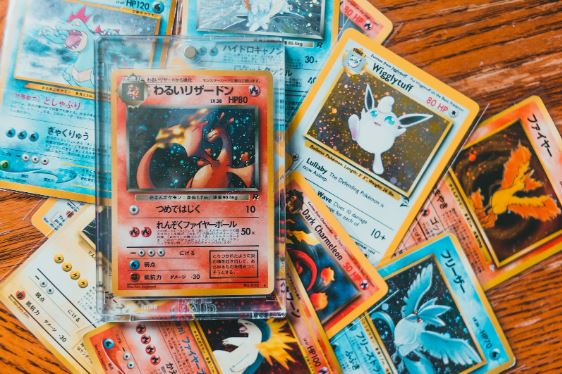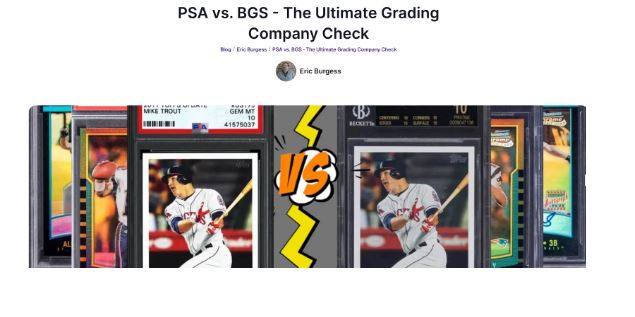While many Pokémon card fans started as players, there are plenty in the hobby who were always collectors. Rather than thinking about the power a particular “pocket monster” would bring to their deck, collectors were focused on the value of a Pokémon card. This may be because of their plans for resale or this interest might just be about filling out a valuable collection to enjoy. Regardless of your motivation, one way to ensure you retain the cash value of your collection is to get your cards professionally graded and sealed in a hard plastic case by professional graders like PSA or BGS.
Of course, this means your beloved cards get sent away for a period of time, only to come back in a plastic box that does not allow for shuffling. What is a Pokémon collector to do? Is sealing your beloved cards away in slab worth the time and money paid to the grading company? Let's weigh the pros and cons of grading your Pokémon cards to help you make that call for your collection.
Photo by Erik Mclean on Unsplash
Pros of Grading Your Pokémon Cards
Grading protects your cards and verifies their condition
What one collector calls ‘Mint Condition’ might be ‘Excellent’ to another - or there could be an even wider gap between your perceptions. How do we come to agreements on card conditions? That’s the business of card grading organizations like PSA, BGS, and many others. By setting clear standards by which to judge the condition of collectible cards, these card grading companies give collectors a third-party’s seal of approval on the condition of their cards.
While different companies offer somewhat different grading standards, they all look at the centering, corners, edges, surface, and color of the card, verifying its condition on a scale from 1 to 10. BGS even provides grades for these additional categories, which is why some collectors prefer their service over the others. This process gives buyers confidence when you go to resell a graded card and the knowledge that a third-party made the assessment. They also know that sealing the card in a slab after grading means buyers can trust in the fact that the card itself is in the same condition as it was when it was assessed.
Graded cards command higher prices and more value
That hard plastic slab and sticker with a professional grading is worth real money. There's no doubt that a professionally-graded Pokémon card in Gem Mint condition will fetch a much higher price than an ungraded card, even if that card is also in the same condition. Collectors and investors are willing to pay a premium for the increased confidence, protection, and prestige that comes with a professional grading and high grade.
This is more clear with high-quality cards, and less so with cards that are in ‘play-quality’ or poor condition. In those cases, only truly historic cards or unique cards (like those signed by the artist) will gain much value being graded on the bottom end of the system. Either way, your collection of graded cards will be worth more than loose cards in a binder. Just check out the difference as tracked on Cardbase for one of my favorite Pokémon cards. This Charizard card is worth about $700 with no grade. With a PSA 10, it sold for almost $40,000! What a difference some plastic and a close eye at PSA can make, huh?
Grading cards makes Pokémon cards easier to resell
Graded cards are generally much easier to sell than loose cards. This is because the grading company has already done the hard work of evaluating its condition and verifying that it is up to their standards. Importantly, this also means an independent party has verified that it’s not a counterfeit card, too.
Looking at the history of card sales, you'll find that cards that are in a graded slab sell more often than loose cards. This is especially true for cards in the best condition where a fair market value can be assessed. Buyers are far more likely to buy a card which they know has been graded by a trusted third party. As our technology to alter images gets better with generative AI, it’s even harder to trust images of cards that are not in your hand. A graded card has a record of its assessment tracked by the grading company so buyers can independently verify that the card has been graded by a reputable company. Who wouldn’t prefer that to hoping that some “Pristine” condition Shadowless Charizard is going to be real when it’s listed for only $50?
Determining which cards to NOT grade is pretty easy
Since grading costs money, it’s not too hard to set aside the bulk of your cards as inappropriate for grading. If the cost of a Pokémon card is less than about $20, there’s absolutely no reason to grade it. Since you’ll be spending that much or more to even get the card graded, it’s pretty easy to set aside a lot of the cards in your collection that will never require grading. This can even help you decide which cards to use in a deck when you play versus those that you’ll want to preserve for their value. Not sure about the value of your Pokémon cards? Cardbase has you covered there.
Cons of Grading Your Pokémon Cards
Your Pokémon’s days on the game table are over
If you are a player of the Pokémon TCG, it’s important to realize that grading a card is going to make it impossible to use in a future game. Once you get your card graded, it will be bound in a hard plastic slab that certainly cannot be slipped into your play deck. This means that your card is now just a collectible item and not a usable card, so make sure you are happy with that decision before you grade your cards. This is made somewhat easier because most modern tournaments don’t allow players to use some of the most valuable Pokémon cards out there, but the fact that your Pokémon will no longer be able to battle should be taken into consideration before you grade a card. Sometimes our nostalgia for old cards can outweigh our desire to increase the value of our collectibles, so give it some serious thought if you play the game regularly.
Grading Pokémon cards costs real money
There’s an old saying that ‘you get what you pay for.’ That’s true in grading services for collectible cards. Getting your cards graded isn't cheap. Each individual card can cost somewhere between $15 and $50 for basic grading services. If you have a bulk set of cards to grade, some of the grading companies will give you a better deal per card.
If you have a lot of cards to grade, look into their annual licenses to cut down on your cost per card and send a set of them in together. Some of the grading companies will run promotions when their service has capacity, so watch for those deals, too.
Keep in mind that these companies offer all kinds of additional services, including storage and auction running, and if you opt for those choices, the price of grading a card can really add up. Make sure you truly need those services before you commit to them.
Your Pokémon card might get a lower grade than you expect
You might believe that your card is in tip-top shape, but there's always a risk that the grading company will be more strict in assessing the condition of your card than you are. While the naked eye can spot some flaws like minor edge wear, bad centering, or off-color printing issues, these details are even easier to spot with the advanced tools and experience of a PSA or BGS.
Imperfections that you didn’t notice can really bring your card's grade down and you still end up paying for a card that is so worn that even a graded copy is undesirable to collectors who want premium conditions only. This could work the other way, of course, with the grading company finding the card to be in better shape than you thought, but that’s probably less likely so definitely consider whether borderline quality cards should be included in your list of cards to have graded.
Grading takes away the ability to inspect and enjoy cards
Once a Pokémon card is sealed in the grading case, some Pokémon fans view them as harder to enjoy. The slabs should not be broken to protect and keep the grading valid, so you can't take a favorite card out to enjoy actually looking at, feeling it, and handling the card. Many Pokémon fans prefer being able to inspect their prized cards closely from all angles rather than just viewing it through some hard plastic. That’s an individual choice, but it should be considered before grading your cards.
The Professional Grading Companies
Several companies offer grading services, each with their unique grading scales and methods. The most renowned among these include PSA, BGS, and CGC. The premium grading companies have the best reputation for their methods and the trust that collectors and investors alike have in their processes.
If you want a head-to-head comparison for these two luminaries of the grading industry, check out this PSA vs. BGS article I previously wrote. However, if you want to spend a bit less money on certifying the condition of your cards, CGC is one of the best lower-priced alternatives to the two giants that dominate the grading space.
PSA vs. BGS - The Ultimate Grading Company Check
The Final Word on to Grade or not to Grade your Pokémon Cards
Grading can greatly increase the value of mint or near-mint vintage Pokémon cards, especially those with a shot at a “Pristine” or “Gem Mint” 10 grade. But for newer or more common cards that wouldn't get top grades, it’s likely not worth the cost unless you intend on reselling the Pokémon cards in the future when they have appreciated. The advice here is to grade cautiously and selectively to maximize your chance of a return on the money you invest to get the card assessed.
In summary, grading Pokémon cards is a decision that involves weighing all of the pros and cons and considering them against your personal goals. Be sure to consider all of the factors that might impact you, including the financial, emotional, and practical factors. Whether you choose to grade your cards or not, understanding the implications of this decision is crucial for every collector and we hope this article helped clarify whether or not that Pokémon card deserves its own suit of plastic armor with an official judgment on its condition. Happy collecting!.



